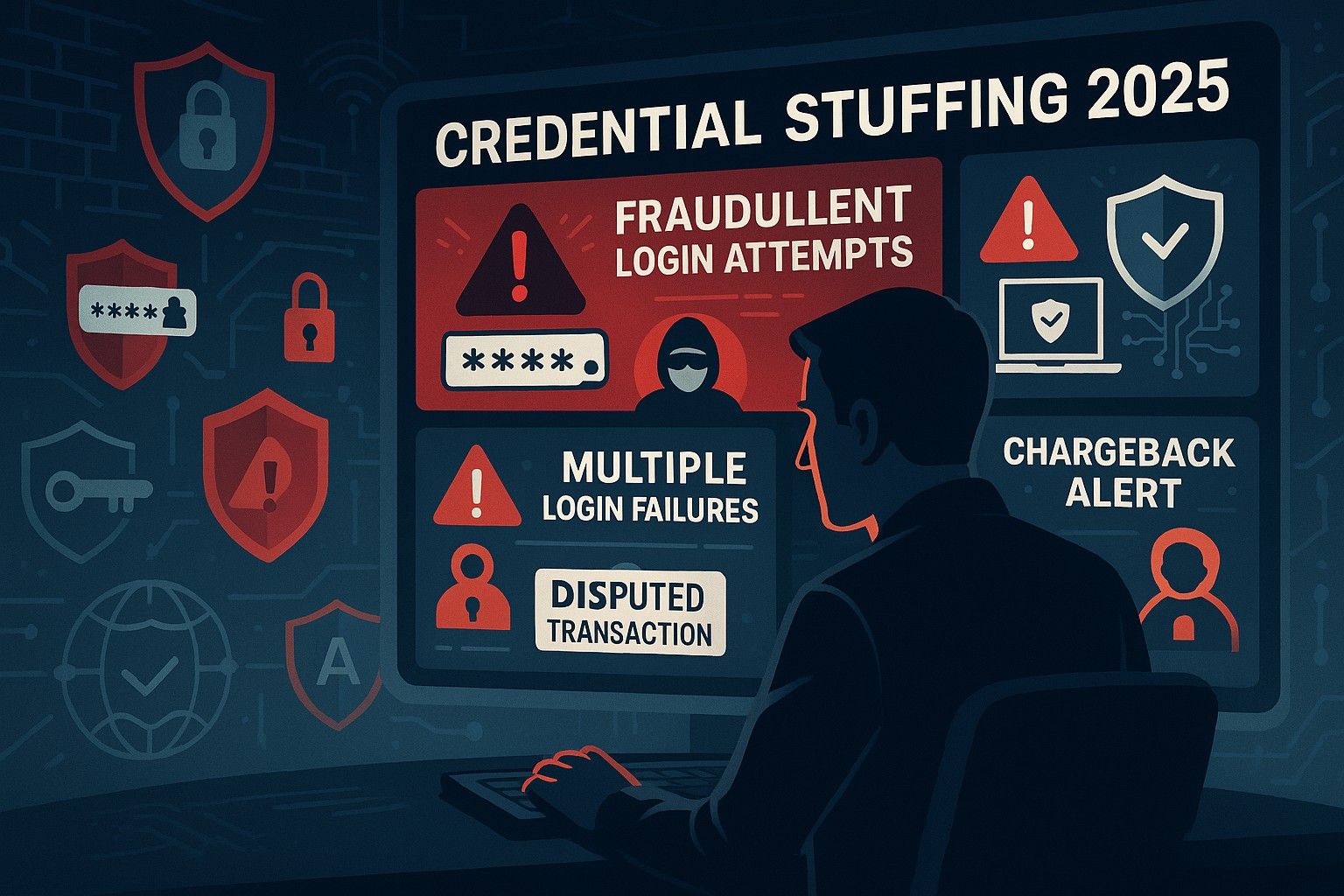Chargeback Management Services - Dispute Response Aug/ 19/ 2025 | 0
As digital fraud evolves, credential stuffing continues to pose a major threat to U.S. businesses—especially in the e-commerce and financial sectors. This automated cyberattack method leads to a surge in unauthorized transactions, leaving merchants vulnerable to chargebacks, reputational damage, and lost revenue.
What Is Credential Stuffing?
Credential stuffing is a type of cyberattack where bots use stolen usernames and passwords—usually obtained from data breaches—to attempt logins across various websites. Since many users reuse passwords across platforms, attackers often succeed in gaining access to accounts, placing fraudulent orders, or hijacking subscription services.
Why Chargeback Professionals Should Be Alarmed
When fraudsters use credential stuffing to make unauthorized purchases, it triggers a chain reaction:
- Customers file chargebacks for transactions they didn’t authorize.
- Merchants absorb revenue losses and often pay chargeback fees.
- Excessive chargebacks can lead to account freezes or merchant termination.
- Increased fraud rates tarnish the business’s reputation and affect future processing rates.
How Credential Stuffing Drives Chargebacks
Credential stuffing is particularly dangerous because it bypasses traditional fraud detection systems. Here’s how it contributes directly to chargeback rates:
- Account Takeover Fraud (ATO): Hackers use valid credentials to log into real customer accounts and make purchases.
- Subscription Abuse: Fraudsters exploit saved cards or stored billing profiles to commit recurring fraud.
- Digital Goods Theft: Immediate delivery of digital products (e.g., software, gift cards) leaves little room to block or reverse the transaction in time.
5 Signs You Might Be a Target
Stay alert for these common red flags that indicate credential stuffing may be affecting your business:
- A sudden spike in failed login attempts
- A high volume of login traffic from unfamiliar locations or IPs
- Multiple accounts accessed from the same device/browser
- Unexpected surge in chargebacks from verified customers
- Automated bot-like behavior on your login page
Prevention Strategies for U.S. Merchants
Proactively defending against credential stuffing requires a layered security approach:
1. Enable Multi-Factor Authentication (MFA)
MFA adds an extra layer of identity verification, stopping attackers even if they have correct credentials.
2. Implement Rate Limiting
Throttle or block excessive login attempts from a single IP to prevent bot activity.
3. Use Bot Detection Tools
Deploy tools like CAPTCHA, reCAPTCHA, or behavioral analysis to identify and stop automated attacks.
4. Monitor Login Patterns
Use machine learning or AI-based analytics to detect suspicious patterns and block anomalous logins.
5. Partner with Chargeback Experts
A professional chargeback management firm like Dispute Response can help detect fraud early, recover lost revenue, and fight back against illegitimate claims.

Email us anytime!
Email customer service 24/7

Call us anytime!
Reach customer care 24/7 at +1 (888) 927-5152
2025 Outlook: Staying Ahead of the Threat
With credential stuffing expected to increase in complexity and scale throughout 2025, businesses must take a proactive stance. From deploying fraud detection software to creating customer education campaigns, your chargeback prevention strategy should evolve just as fast as the threats do.


